For additional information relating to this article, please contact:
November 22, 2019BUSINESS AND EMPLOYMENT DYNAMICS, NOVA SCOTIA 2017 Statistics Canada has released the 2017 results for provincial and territorial business and employment dynamics. This covers incorporated and unincorporated businesses in the private sector that issue at least one T4 slip in any given calendar year, but excludes self-employed individuals or partnerships where the participants do not draw salaries.
In 2017, there were a total of 27,310 active businesses in Nova Scotia's private sector, including 23,950 incumbents (continuing operations from previous years) as well as 3,370 new entrants. This was offset by exit of 2,980 firms from the numbers of previous incumbents. Entrants in any given year are enterprises that have current payroll data, but that did not have payroll data in the previous year. Similarly, exits in any given year are identified by the absence of current payroll data, where such data had existed in the previous year.
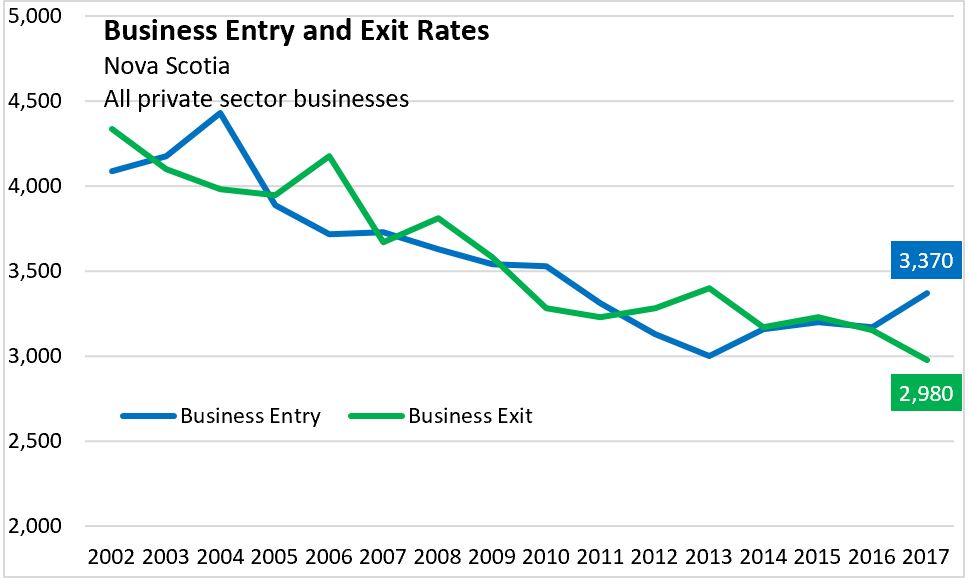
Measured in percentage terms (relative to an average of prior and current year totals), the entry rate for new firms was 12.4 per cent in 2017, the highest entry observed since 2010. The exit rate for firms decreased to 11.0 per cent in 2017, down from 13.4 in 2008 and down from 11.6 in 2016. Compared with the pre-recessionary period before 2008, both exit and entry rates are down for Nova Scotia businesses.
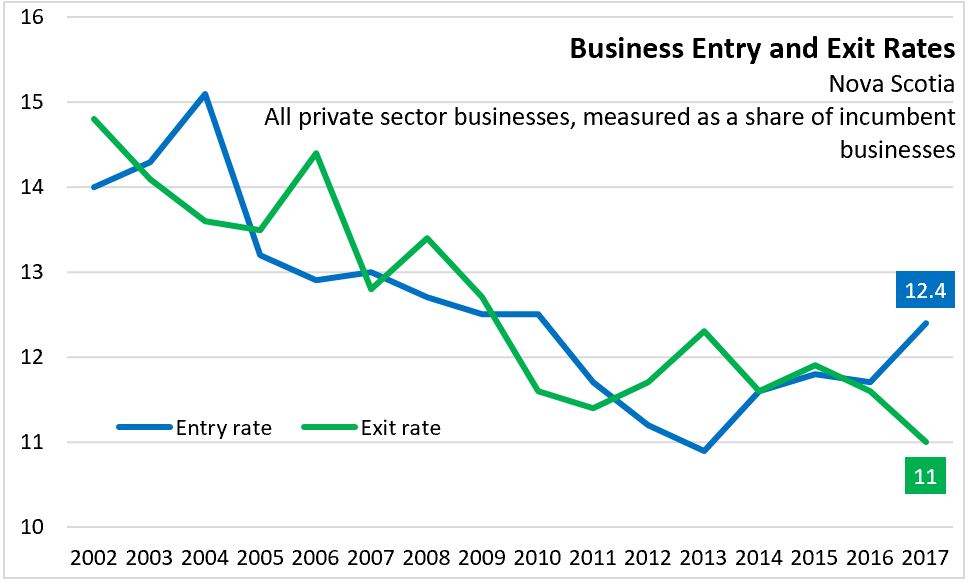
By sector, unclassified businesses accounded for a notably faster entry rate. Among classified sectors, the fastest entry rates were reported in mining/oil/gas, information/culture and professional/technical services. Entry rates are slower for wholesale trade and company management
The fastest exit rates were also reported among unclassified businesses. Within those businesses classified to a sector, the fastest exit rates were reported in information and culture, management of companies, professional/technical services and real estate/leasing. The slowest exit rates were observed in wholesale trade, retail trade, manufacturing and accommodation/food.
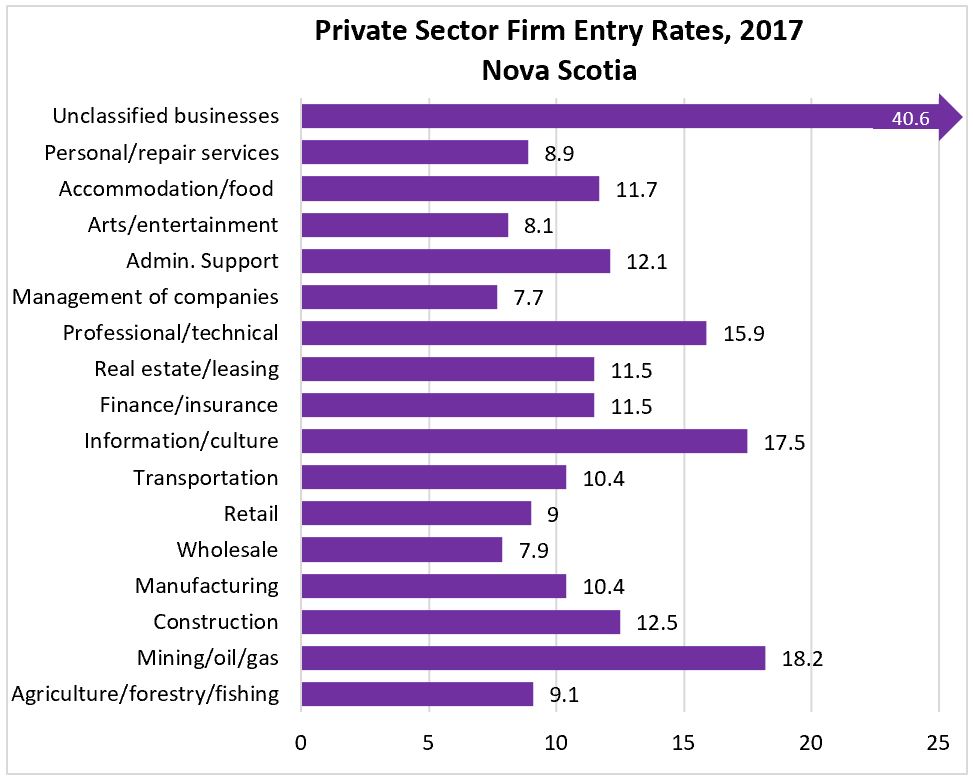
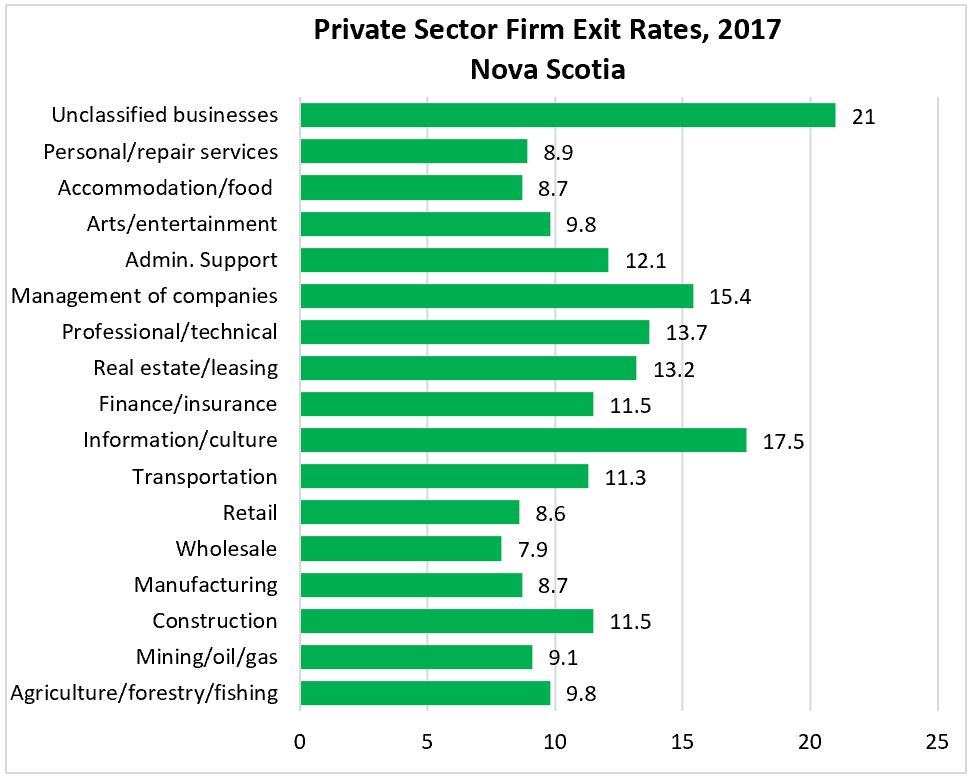
Statistics Canada's business employment dynamics data also examines employment changes in the private sector. In 2017, there was net private sector employment creation of 1.3 per cent in Nova Scotia, up from 0.2 per cent in 2016.
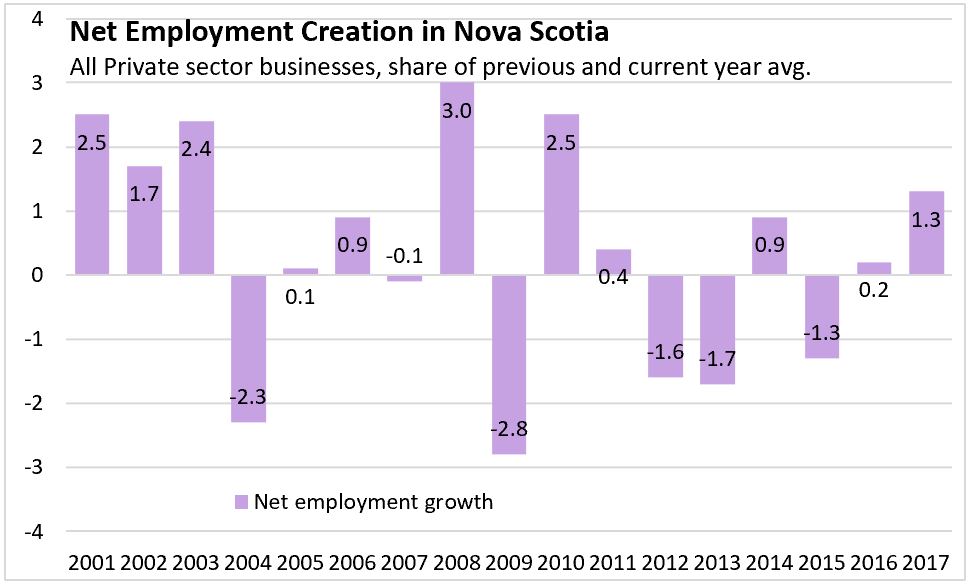
Net employment growth is broken down into four subcomponents of gross employment creation and destruction: employment creation by entrants (1.7 per cent), employment creation by growing incumbents (9.2 per cent), employment destruction by exits (1.3 per cent), and employment destruction by declining incumbents (8.3 per cent).
In all years since 2000, most net private sector employment change is explained by employment creation or destruction by incumbents rather than by new entrants or exiting firms.
In general, employment turnover has been lower in the post-recessionary economy than it was prior to 2008. Both gross employment creation and gross employment destruction trended up from 2014 to 2015 before both slowed in 2016, with destruction slowing more than creation. In 2017, gross employment creation increased while employment destruction fell again.
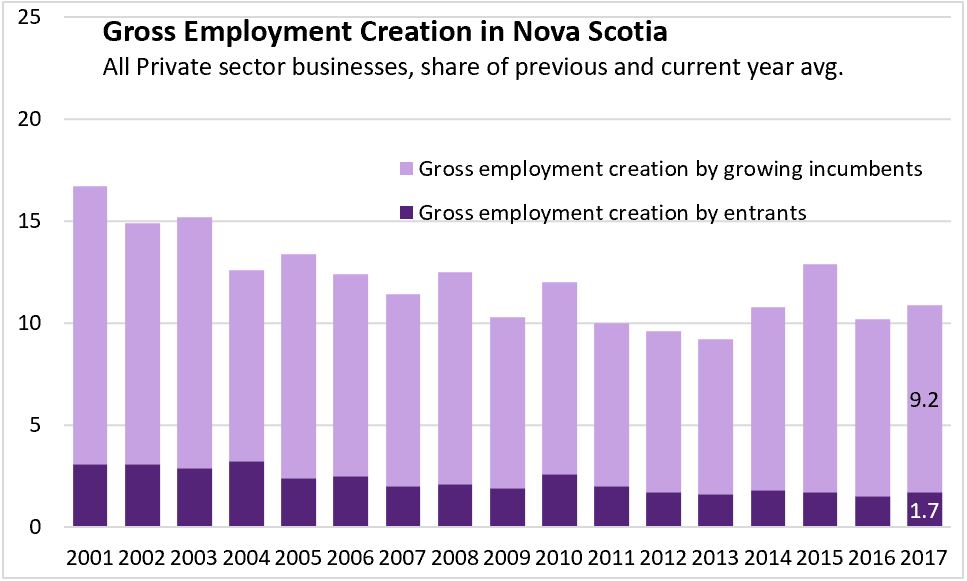
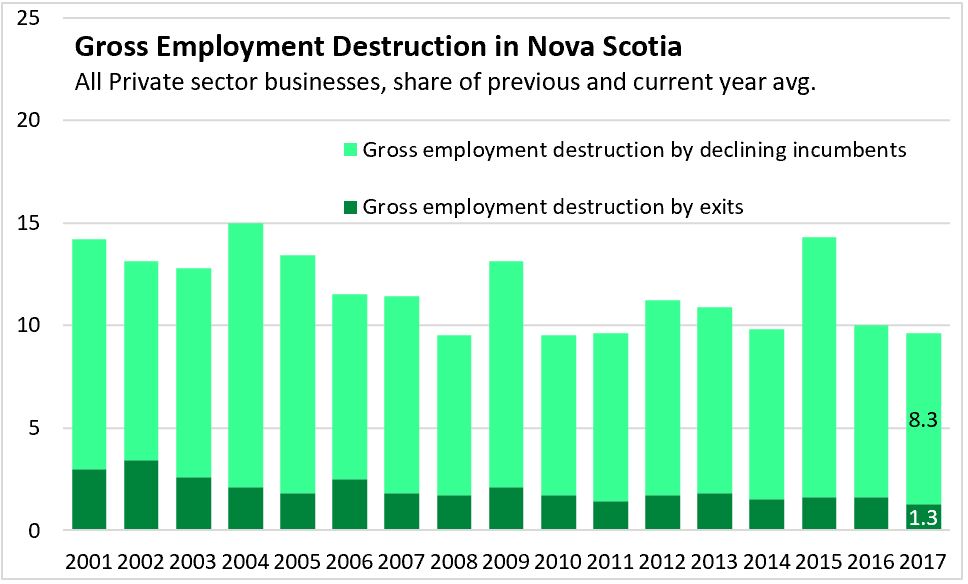
The contribution that each sector makes to overall employment dynamics depends on its share of overall employment and its gross employment creation or destruction. Sectors such as manufacturing, retail, wholesale, finance/insurance, administrative and support services, information and culture, and accommodation/food account for a larger share of total employment than their share of active businesses. Agriculture/forestry/fishing, construction, personal/repair services and professional/technical services are examples of sectors with a greater share of active businseses than their share of employment.
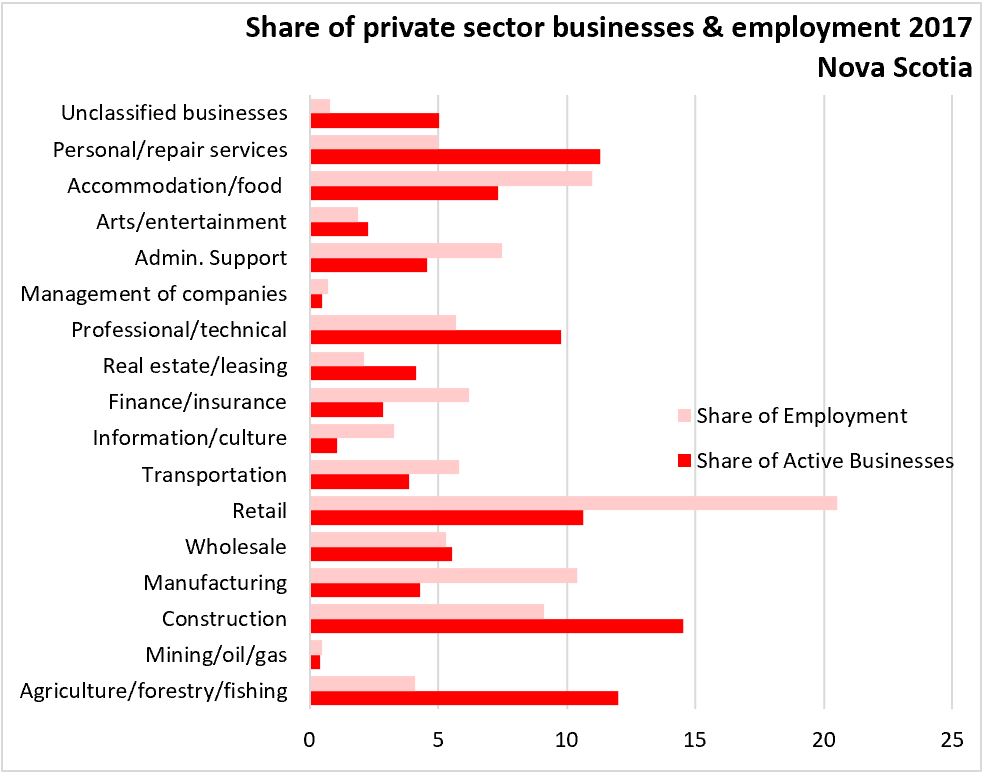
The largest contributions to gross employment creation in 2017 came from administrative support services, retail, construction and manufacturing employers.
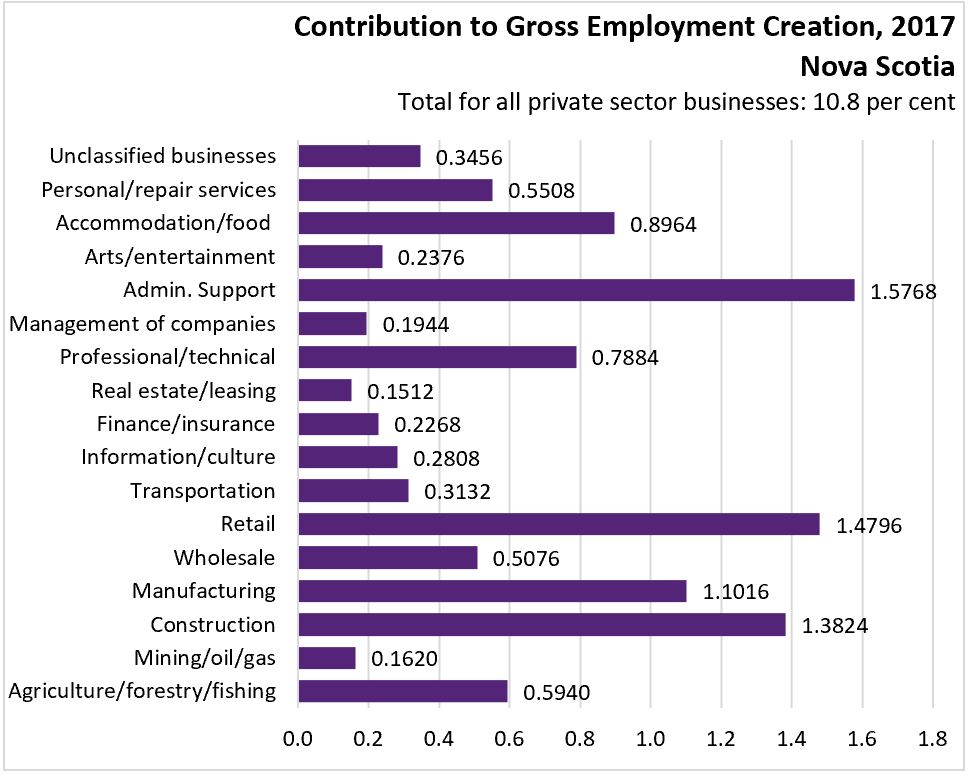
The largest contributions to gross employment destruction in 2017 were reported among construction, retail, accommodation/food, manufacturing and transportation.
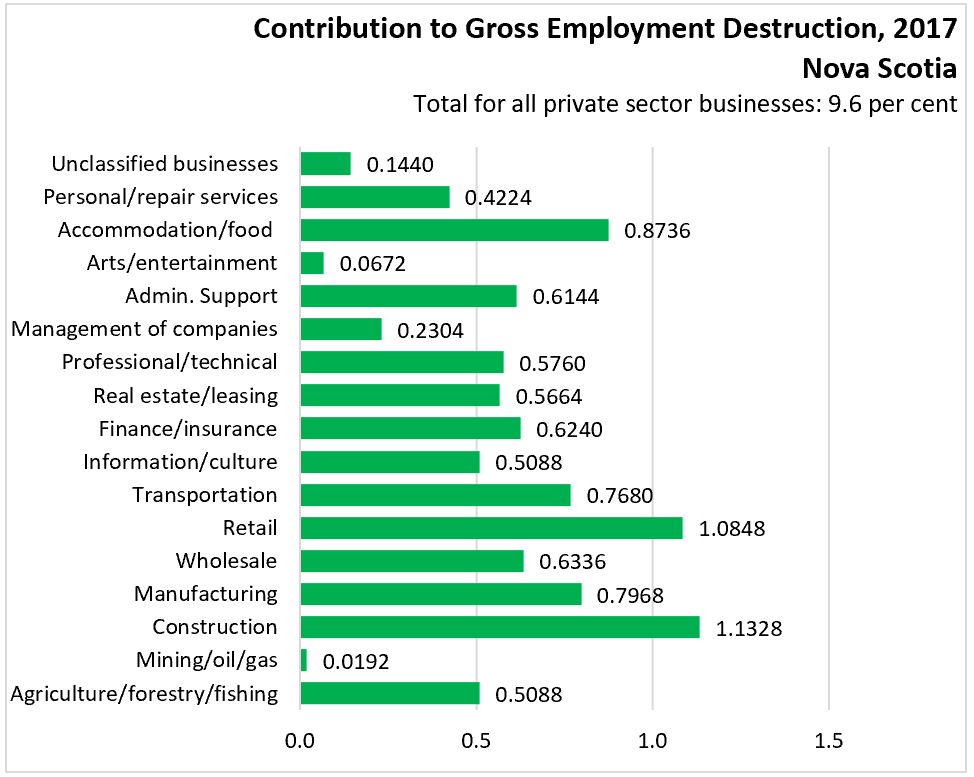
Compared to other provinces in 2017, Nova Scotia's Business Entry rate was lower than all provinces except New Brunswick and Quebec. Nova Scotia's exit rate lower than all provinces except Quebec. The highest entry rates were seen in Prince Edward Island (17.9 per cent), British Columbia (14.6 per cent) and Alberta (14.3 per cent). The highest exit rates were in Alberta (14.9 per cent) and Newfoundland and Labrador (14.3 per cent).
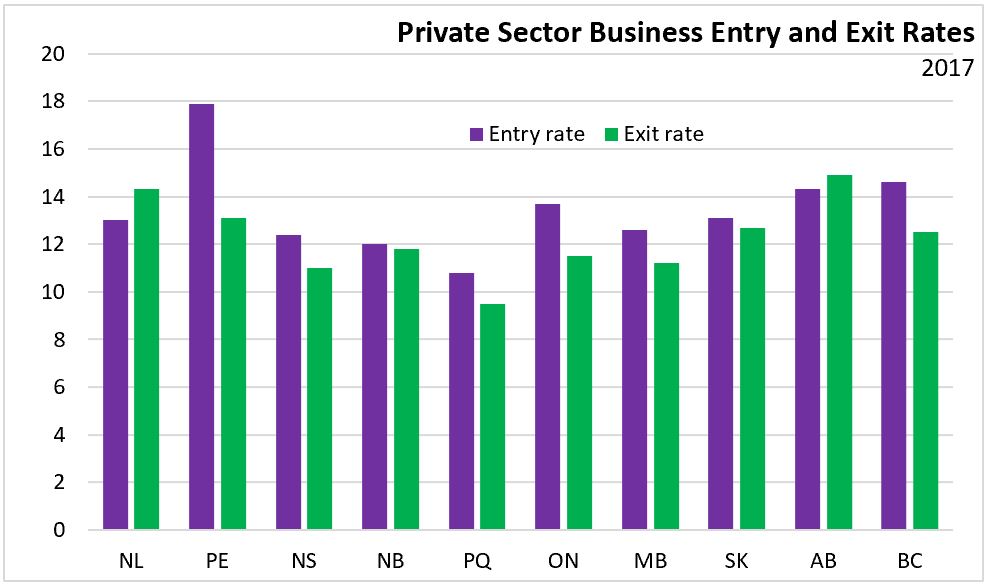
Source: Statistics Canada. Table 33-10-0087-01 Business Dynamics measures, by industry, per province or territory; Table 33-10-0089-01 Business Sector employment flow rates, by industry, provinces and the territories; Table 33-10-0091-01 Contribution to private sector employment, gross employment creation and destruction, by Industry, per province or territory